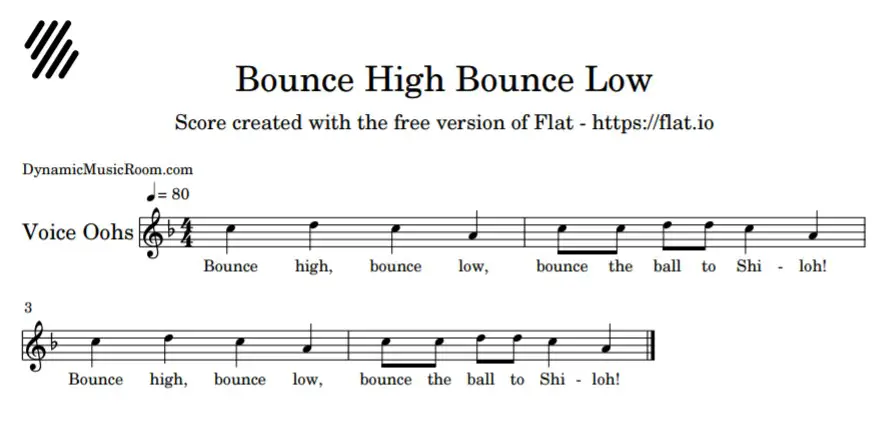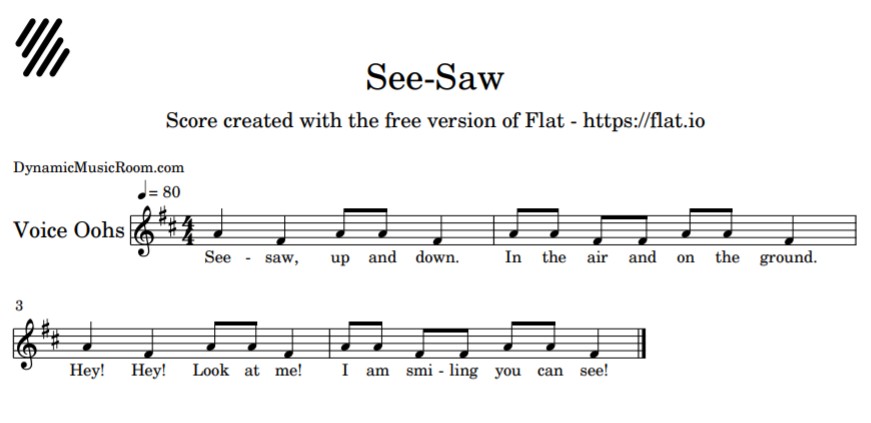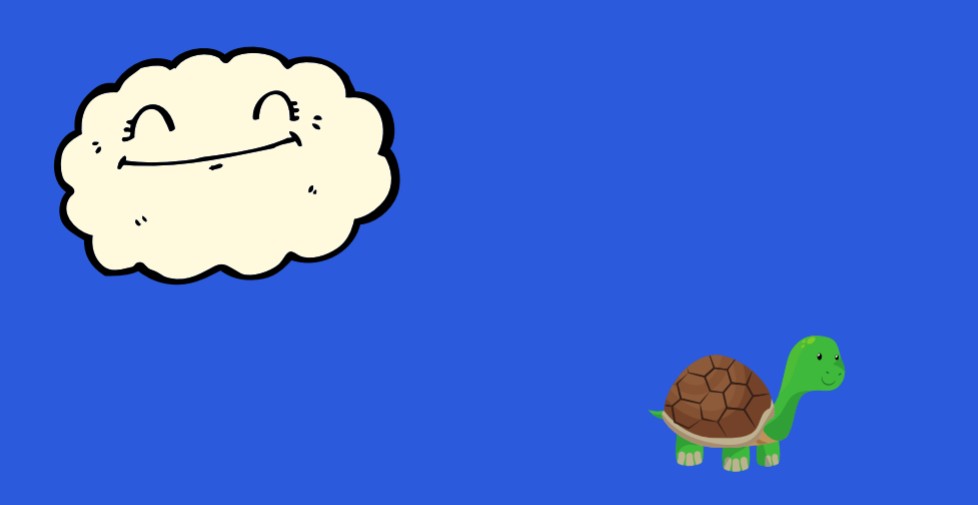Early in my career, I wanted to teach my Kindergarten students about pitch and high vs. low, but my collection of songs that really demonstrate this was limited to 1!
So I did some searching and asking around and came up with these 5 easy high and low songs for Kindergarten.
Using high and low songs are an easy way to reinforce broad contrasting pitch concepts. Look for songs with clear high and low as well as lyrics which may reinforce the idea. My favorites include:
- Bounce High Bounce Low
- Higher Than A House
- Twinkle Twinkle
- Someone Standing
- See-Saw Up And Down
Look ahead for notation, analysis, games, and ways to use these songs to reinforce high and low.
Hate always searching for songs? Get 30 of my favorite songs with directions for activities by clicking the link.
Table of Contents
Why Teach High And Low?
It can be hard to know what to teach in Kindergarten music, but one of the main approaches is to work on broad, contrasting concepts such as high vs. low.
Working on high and low in Kindergarten sets students up for success in future music years in the following ways:
- Works towards pitch awareness
- Improves matching pitch
- Precursor for learning notes
- Develops an understanding of pitch
- Increases listening skills
- Can be applied to voice or instruments
5 Easy High and Low Songs For Kindergarten
In this section, I’ll mention some great high/low songs for younger grades. I’ll include the following information for your reference:
- Notation
- Source/Link (where applicable)
- Game Directions (where applicable)
- Other notes
#1 Bounce High Bounce Low

Source/Link: American Folk Song Collection
Game Directions: There are 2 ways I like to play this game.
- Students bounce a ball on the word “bounce” and then pass the ball on the word “Shiloh.”
- Using a bean bag or soft, squishy ball, students toss the bag up for high, down for low, and then on to the next person.
Other notes: The melody of this song is simple, but it also shows high and low well. On top of this, the lyrics call out high and low when the melody goes high and low.
Further Reading: Name games for music class
#2 Higher Than A House

Source/Link: The Music Effect Book 2
Game Directions:
- Students move to show high and low based on the pitches of the song.
- The final phrase is changed by the leader, and the students have to show with their hands what the leader sings.
- The final phrase is changed every time to encourage students to listen better to the pitch.
- Leaders are switched to students after a while.
Other notes: The book also includes an interesting story and other visual aids.
#3 Twinkle Twinkle

Source/Link: Traditional
Game Directions: No traditional “game” exists for this song, but here are a couple of ideas you may want to try.
- Perform different steady beat motions.
- Use hands in a star shape to show melodic contour.
- Create a movement B section of the song where students move to match you improvising high and low (look at Pitch Dance below for more details).
Other notes: The contour of this song would be great to talk about and show with visuals. The initial leap of the fifth is also easy to isolate and talk about high and low.
#4 Someone Standing
Visit link for notation.
Source/Link: Caldwell Organized Chaos (check out the linked article for more high and low tips)
Game Directions:
- Students stand in a single circle with an “it” person in the middle.
- During the song, students walk to the right around the circle and sing.
- At the end, they face the middle and the person in the middle sings or plays a high and low pattern.
- The class echoes the person’s pattern by singing.
- The “it” person chooses a new it and the game repeats.
You could also have a few people in the middle, and they take turns giving a pattern. This saves time.
Other notes: On top of the game which can be used to show and practice high and low, you also have a good chance to show the contour of the song and its broad low-high-low line.
#5 See-Saw Up And Down

Source/Link: American Folk Song Collection
Game Directions: The game for this song revolves around creating different and more complicated seesaw (high/low) moves with partners.
Other notes: This song only has two pitches which can be great for reinforcing high and low. It can also be used to prepare sol-mi in older grades.
4 Ways To Teach High And Low In Kindergarten
Using these songs is great fun for Kindergarten kids, but there are some ways to teach specifically about the highs and lows in the song.
Here are 4 of my favorite activities to teach high and low in Kindergarten.
Note: Look for the button at the end of this section to download FREE resources for high and low I use in my room.
Pitch Dance
In pitch dance, you need some sort of pitched instrument to play with clear high and low selections available on the instrument (guitar or ukulele may not work well).
I prefer to use a piano.
Students should dance either up high or down low matching what the piano (or another instrument) is playing.
When the music stops, the students should freeze.
They should do this whole activity without talking.
Naturally, the teacher is improvising on the instrument and varying high and low.
At first, you may want to use an extreme difference in pitch. Then, you may gradually reduce the intervals.
Pro-tip: Expand the fun of the game by asking students to lead their dance moves with specific body parts.
For example, they now have to move high and low with their knees first.
You may even want to ask the students for body part ideas (just watch out for the obviously inappropriate ones!).
Watch The Leader
For this one, you need pictures representing high and low such as the image below.
Students sing on a general syllable (“doo,” “loo,” or “bum” work well) following the images as you point to them. (Check out this list of vocal warmups for kids to get better singing going.)
Then, you pick another student to come up and point to the pictures. The class has to try to follow them singing high and low.
Letting everyone get a turn will make everyone feel like a leader, and the game aspect of the activity will keep them interested without realizing they’re practicing a musical concept.

Arrange Your Own Song
Using star images on the board or cut out in small groups, students may arrange their own high and low song.
Don’t stress about words, although if they know a nursery rhyme or chant, they may want to apply the high and low to these words.
I enjoy having students make up these songs in small groups and then take turns playing on a xylophone in the general pitch level.
Pro-tip: Remove the F and B bars to avoid all half steps for a guaranteed good sound. This is the magic of the 5 notes of the pentatonic scale.
Draw What You Hear
This activity also works really well as an assessment tool.
Give the students a piece of paper and a couple of markers.
Have them listen to a melody line you play and draw the high/low contour of the line.
You may find it helpful to model this activity first and ask these questions as you do it:
- Does this start low or high?
- Does it go one direction or change in the middle?
- How many times does it change direction?
- How high or low did this music go?
Pro-tip: Don’t change too much or too often. Make it seem really obvious at first.
After a while and when they get the hang of it, you may want to really challenge them with difficult ones.
Conclusion
I hope you enjoyed these 5 high and low songs for Kindergarten.
Combined with some above learning activities, your students will leave Kindergarten with a strong grasp of pitch and be ready for expanding their knowledge in First grade.
I love including classical music wherever I can, but sometimes it’s time-consuming to create a bunch of resources.
When I discovered Maestro Classics, I knew I had to share it with others. The resources are affordable and engaging for all students.
(It’s even great for cross-curricular teaching).


